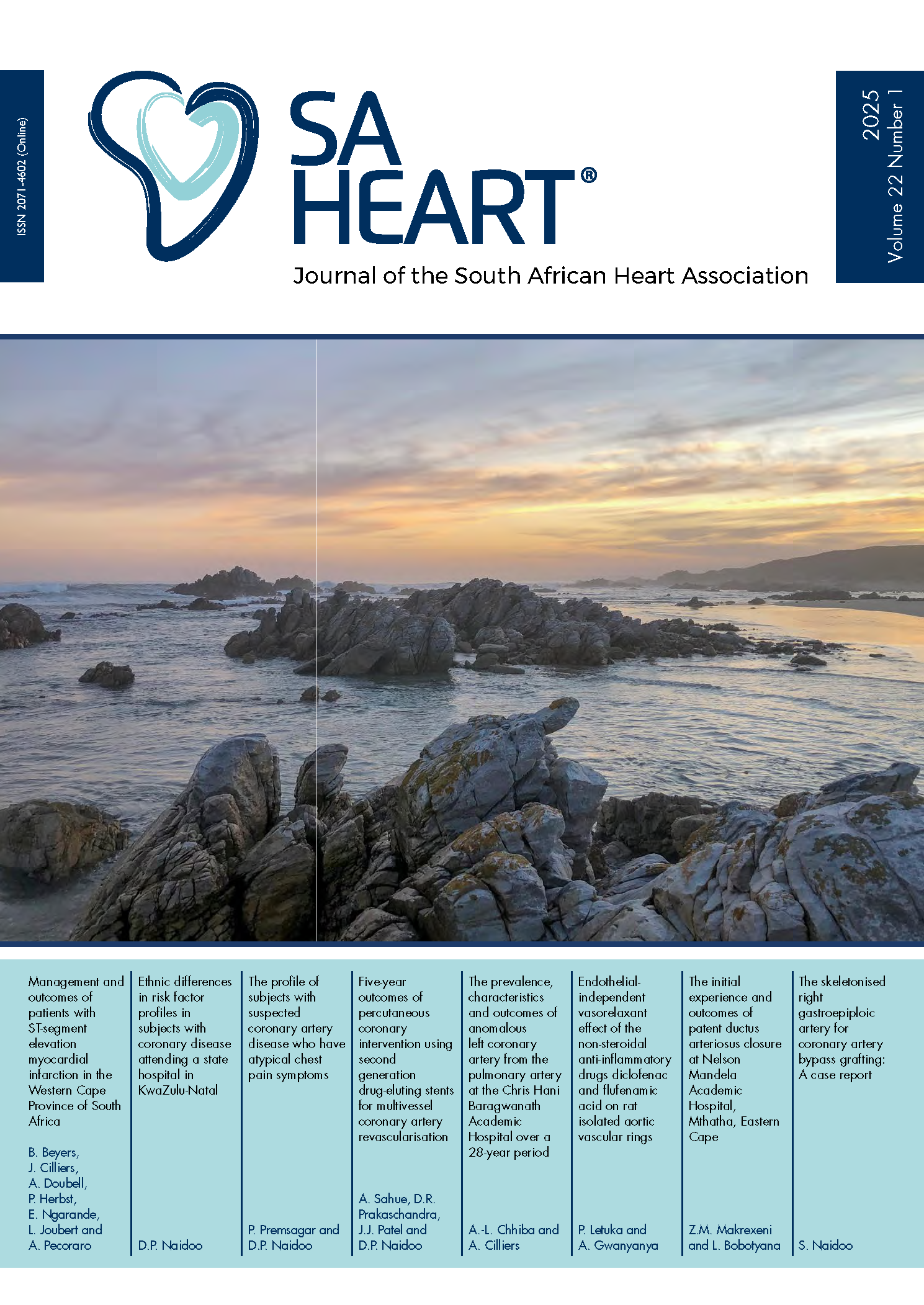The profile of subjects with suspected coronary artery disease who have atypical chest pain symptoms
DOI:
https://doi.org/10.24170/22-1-6738Abstract
Background: This study describes the risk factor profile of subjects with coronary artery disease (CAD) who present with atypical chest pain.
Method: Hospital records of patients with chest pain who did not satisfy the criteria for typical angina and who underwent both sestamibi nuclear imaging and coronary angiography were evaluated over a 6 year period (2002 - 2008).
Results: Amongst 5 378 subjects referred for evaluation of myocardial ischaemia to a tertiary hospital, the prevalence of atypical / non-anginal pain was 9.9% (531 patients). Of the 173 subjects who underwent both nuclear scans and coronary angiography, 99 (M 66, F 33) (57%) had epicardial CAD at angiography (>50% stenosis) with equal distribution of single, double and triple vessel disease. There was no difference in the pretest probability of CAD in subjects with and without CAD (20.5% vs. 21.9% p=0.891). Neither the number of chest pain criteria nor the individual pain characteristics were associated with the presence of CAD (p>0.05). CAD was more likely in the middle age and older subjects (p<0.001), in males (p<0.001) and in those who smoked (LR 5:2 p=0.001). On multivariate analysis age, smoking, waist circumference and gender emerged as predictors of CAD. Clustering of 3 or more risk factors was associated with the presence of myocardial perfusion deficits (p=0.001).
Conclusion: Characterisation of chest pain symptomatology did not prove to be helpful in the detection of CAD among subjects with a low pretest probability. Decision-making and triage should be supported by a positive smoking history and risk factor clustering.
Downloads
Downloads
Published
How to Cite
Issue
Section
License
This journal is an open access journal, and the authors and journal should be properly acknowledged, when works are cited.
Authors may use the publishers version for teaching purposes, in books, theses, dissertations, conferences and conference papers.
A copy of the authors’ publishers version may also be hosted on the following websites:
- Non-commercial personal homepage or blog.
- Institutional webpage.
- Authors Institutional Repository.
The following notice should accompany such a posting on the website: “This is an electronic version of an article published in SAHJ, Volume XXX, number XXX, pages XXX–XXX”, DOI. Authors should also supply a hyperlink to the original paper or indicate where the original paper (http://www.journals.ac.za/index.php/SAHJ) may be found.
Authors publishers version, affiliated with the Stellenbosch University will be automatically deposited in the University’s’ Institutional Repository SUNScholar.
Articles as a whole, may not be re-published with another journal.
Copyright Holder: SA Heart Journal
The following license applies:
Attribution CC BY-NC-ND 4.0

